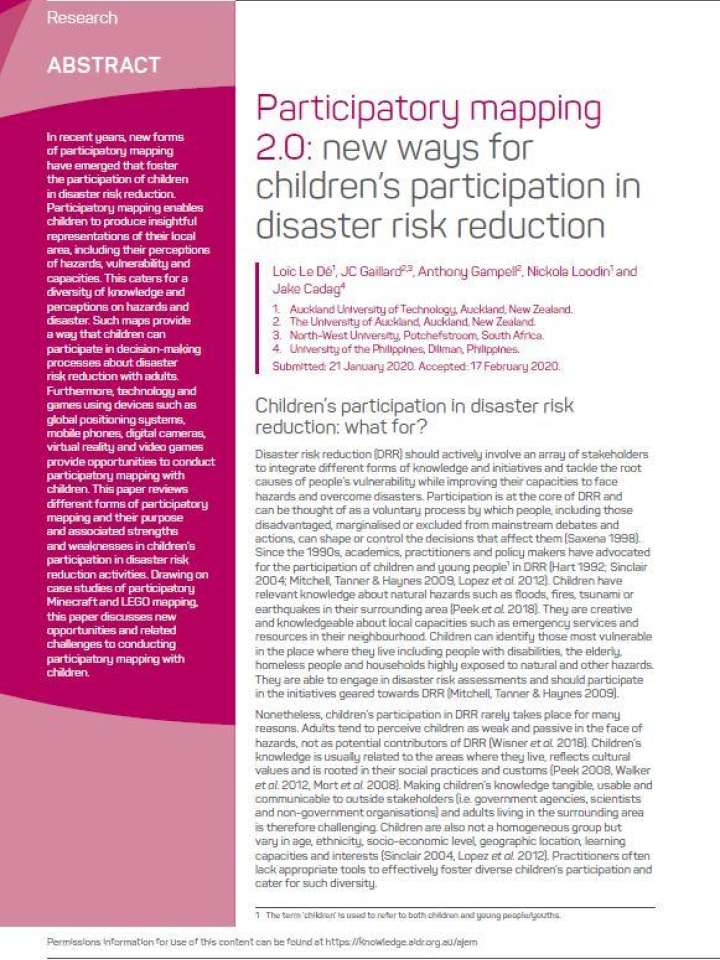Participatory mapping 2.0: new ways for children's participation in disaster risk reduction
This paper reviews different forms of participatory mapping and their purpose and associated strengths and weaknesses in children’s participation in disaster risk reduction activities. Drawing on case studies of participatory Minecraft and LEGO mapping, this paper discusses new opportunities and related challenges to conducting participatory mapping with children.
The researchers highlight that it is essential that any participatory mapping initiative, whether it is traditional or 2.0, is not an end and should not be conducted with the sole objective of doing participatory mapping. The aim is to facilitate the exchange of information and dialogue between children and adults in their community, DRR practitioners and researchers. Children’s knowledge is often regarded as inferior compared with that of adults and children may not have the same competence in communicating as do adults. However, this does not mean that the contribution of children is invalid and that they cannot participate in the decision-making process related to DRR.
Explore further
